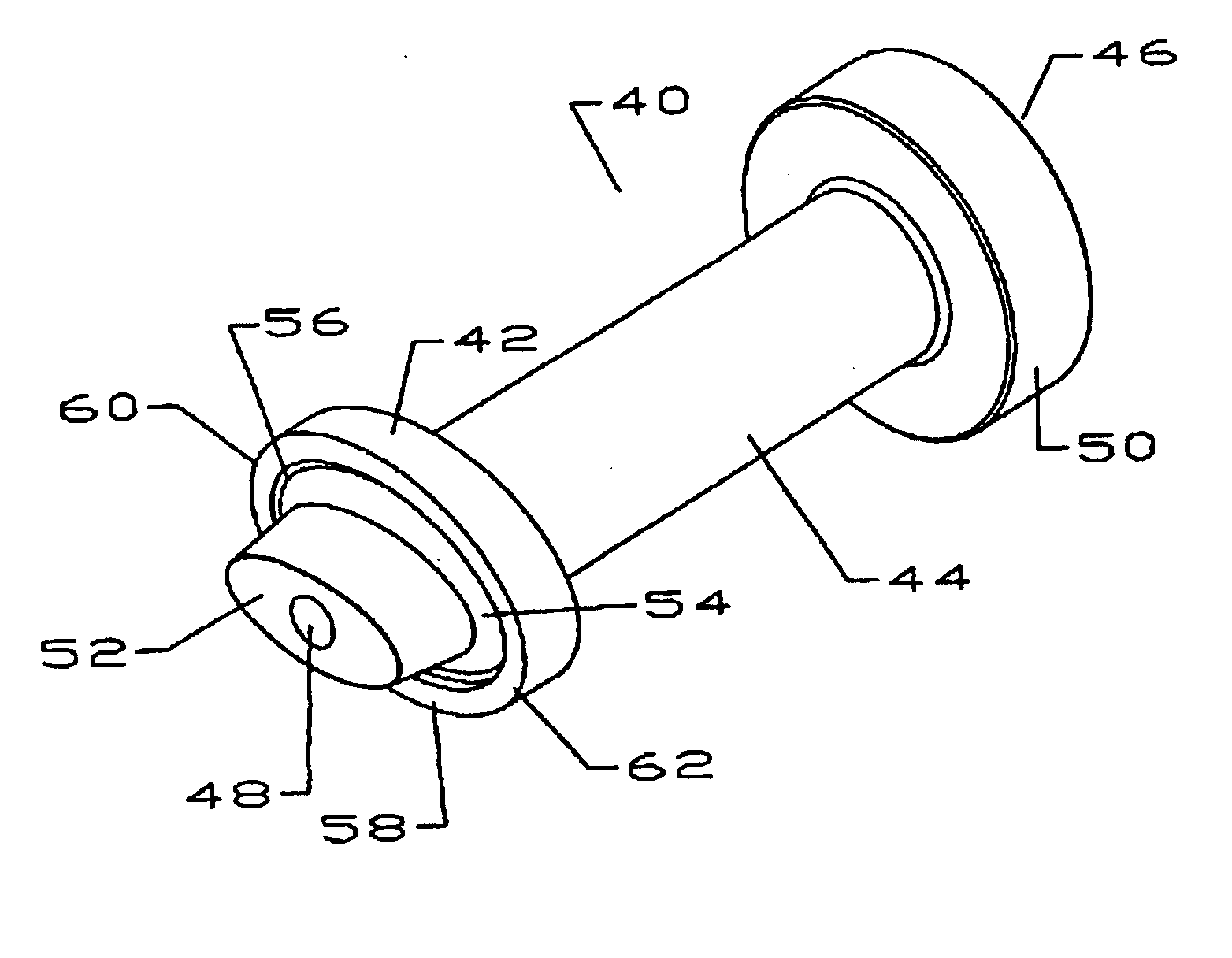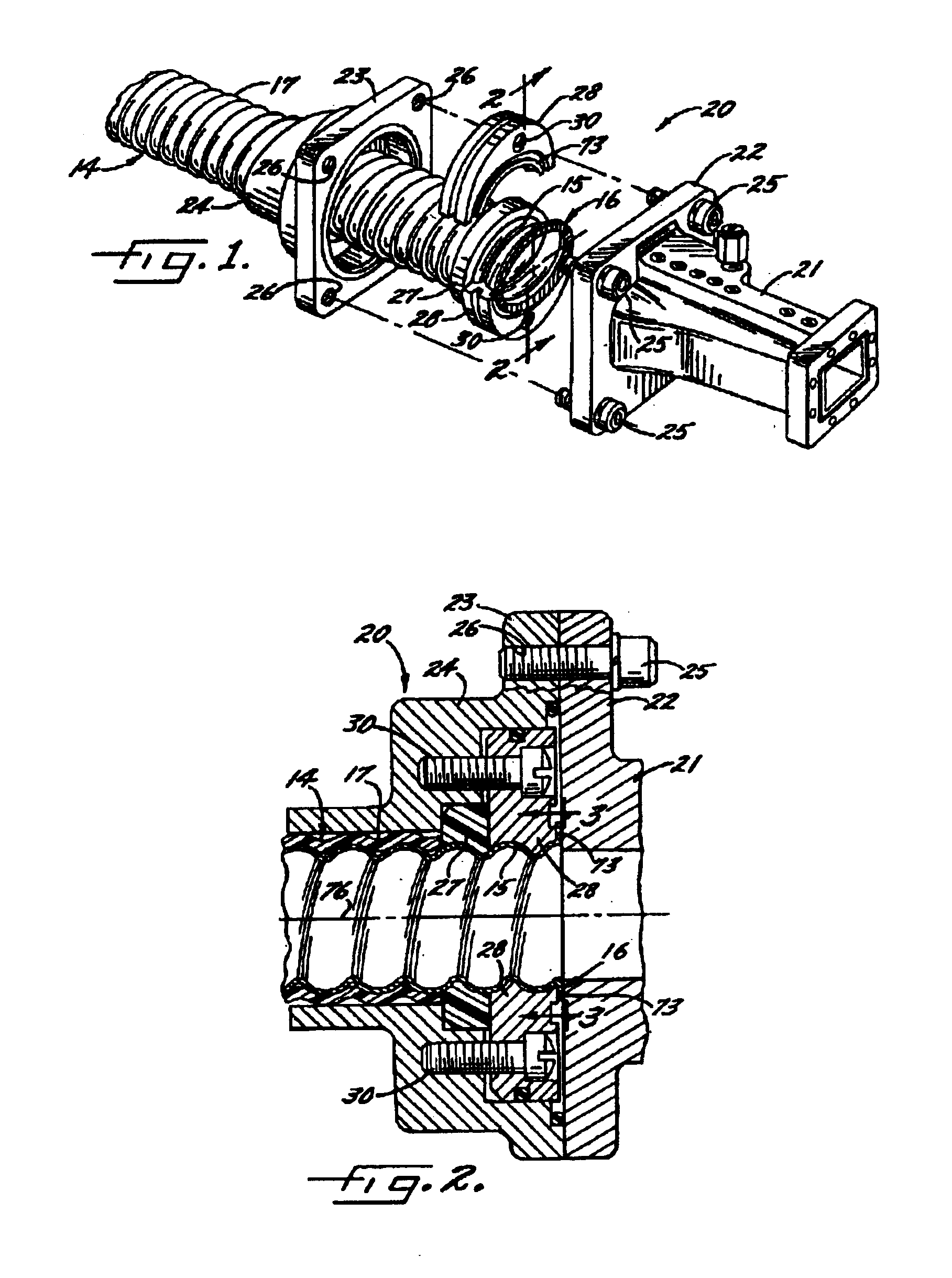Method and apparatus for flaring a tube
- Summary
- Abstract
- Description
- Claims
- Application Information
AI Technical Summary
Benefits of technology
Problems solved by technology
Method used
Image
Examples
Embodiment Construction
[0016]For purposes of illustration, a typical use of the present invention, forming connections in a waveguide system, is shown in FIG. 1. The waveguide 14 is of the type used, for example, to carry a signal in a microwave antenna feeder system. The waveguide 14 comprises a corrugated tube 15, for example made of copper or other conductive metal, having an elliptical cross-section. A sheath 17 of insulating material encapsulates the length of the tube. The sheath 17 is removed where electrical connection to the waveguide 14 is desired. The end of the corrugated tube 15 is formed with an outwardly extending end flare 16 through application of the present invention.
[0017]A waveguide connector 20 is coupled to the end portion of the tube 15 to couple the waveguide 14 to, for example, an antenna feed horn or the like. In this instance, the waveguide connector 20 has an elliptical to rectangular transition body 21 formed with a mounting flange 22 adapted to be fastened to the flange 23 o...
PUM
| Property | Measurement | Unit |
|---|---|---|
| Fraction | aaaaa | aaaaa |
| Angle | aaaaa | aaaaa |
| Radius | aaaaa | aaaaa |
Abstract
Description
Claims
Application Information
 Login to View More
Login to View More - R&D
- Intellectual Property
- Life Sciences
- Materials
- Tech Scout
- Unparalleled Data Quality
- Higher Quality Content
- 60% Fewer Hallucinations
Browse by: Latest US Patents, China's latest patents, Technical Efficacy Thesaurus, Application Domain, Technology Topic, Popular Technical Reports.
© 2025 PatSnap. All rights reserved.Legal|Privacy policy|Modern Slavery Act Transparency Statement|Sitemap|About US| Contact US: help@patsnap.com



